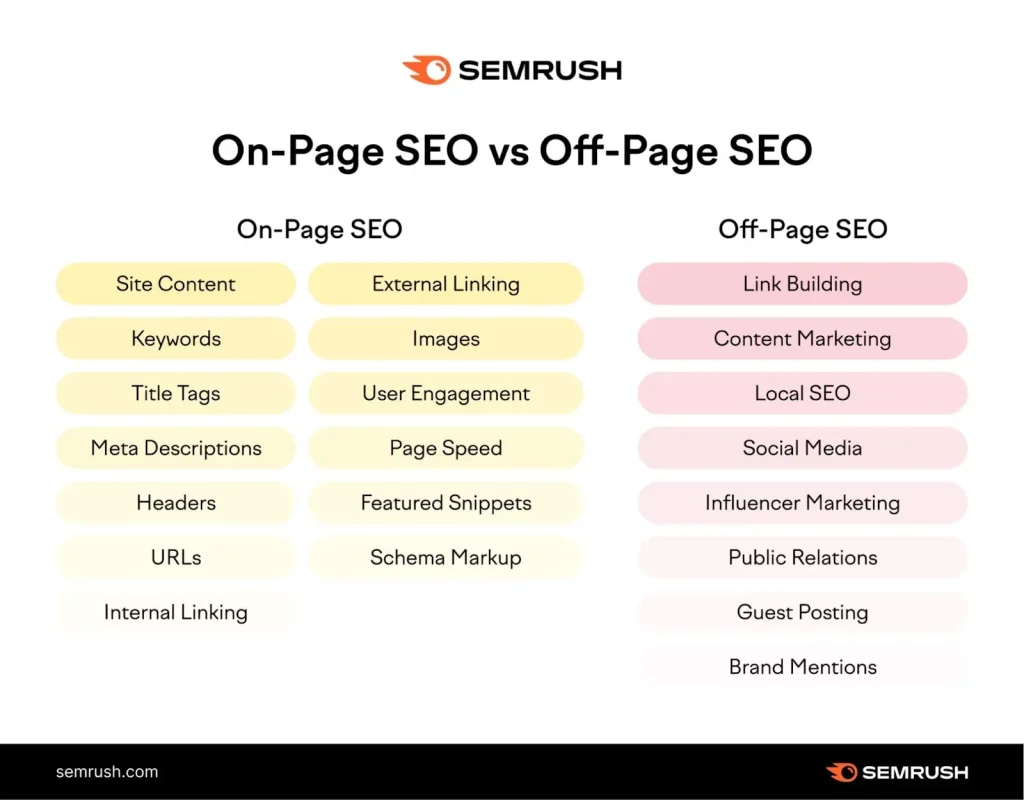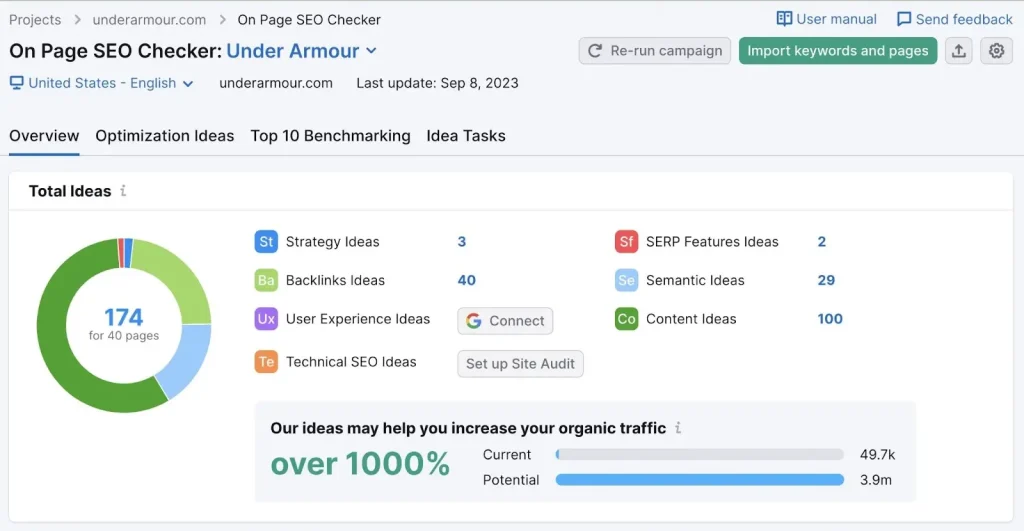What Is On-Page SEO?
On-page SEO, also known as on-site SEO, is the process of optimizing webpages and their content for search engines and users. This process helps pages rank higher on Google and drive more organic traffic.
Common on-page SEO tasks include optimizing for search intent, refining title tags, adding internal links, and improving URLs.
Below, we’ll cover various techniques to optimize your site for on-page factors.
First, learn how on-page SEO differs from off-page SEO:
On-Page SEO vs. Off-Page SEO
On-page SEO involves any task performed on a webpage (or internally) to improve rankings, while off-page SEO involves any task performed outside your site (or externally) to boost rankings.
Backlinks are a major off-page SEO factor. Other off-page methods include social media and public relations.
Both are crucial for a strong SEO strategy. However, you can directly control on-page SEO factors.
Focusing on these factors is a good place to begin.

Why Is On-Page SEO Important?
On-page SEO is important because search engines rely on keywords and other on-page SEO elements to determine whether a page matches a user’s search intent.
When a page is relevant and useful, Google displays it to the user. Google’s algorithm changes often, but user experience remains a priority. Google recommends focusing on “people-first content,” which means creating valuable content that aligns with user intent is more important than ever.
Next, learn how to update your content to reflect on-page SEO best practices.

9 On-Page SEO Techniques for Your Website
Here are key on-page optimization techniques to consider:
- Write unique, helpful content
- Place target keywords strategically
- Write keyword-rich title tags
- Write click-worthy meta descriptions
- Use headings and subheadings to structure your page
- Optimize URLs
- Add internal links
- Add external links
- Include and optimize images
Below, learn more about each technique.
1. Write Unique, Helpful Content
Creating high-quality content that matches readers’ search intent is a crucial on-site SEO step.
Use a keyword research tool to find relevant topics and target keywords. For example, enter a term like “audio book” into the Keyword Magic Tool.
2. Place Target Keywords Strategically
After choosing target keywords, place them in key areas:
- H1
- First paragraph
- Subheaders (H2, H3, etc.)
Google scans these sections to understand the page’s topic. Readers will also quickly see if your page meets their needs.
Analyze your content using the On Page SEO Checker.
Configure the tool for your site. It will show you whether your target keywords appear in important areas.
